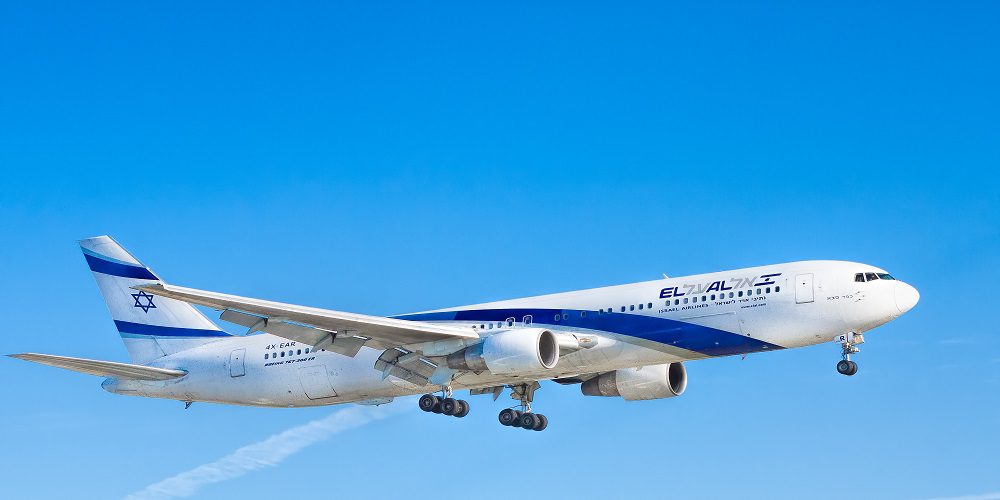Welcome aboard, eco-minded travelers! Today, we invite you to fasten your seatbelts and embark on an extraordinary journey through the emerald realm of the skies. While air travel has long been associated with convenience and adventure, did you know that it also holds the key to unlocking a greener future? In this blog post, we will soar high above the clouds to explore the unparalleled environmental benefits of air transportation. From reducing carbon emissions to fostering sustainable innovation, prepare for a breathtaking ride as we unveil how aviation is spreading its wings towards a more eco-friendly horizon.
Introduction
Air transportation is a vital part of the global economy, enabling the movement of people and goods around the world. In recent years, however, there has been increasing concern about the environmental impact of air travel.
There are a number of ways in which air transportation can be made more environmentally friendly, from using cleaner fuels to investing in more efficient aircraft. The aviation industry is also working to offset its carbon emissions through initiatives such as tree planting.
While there is still some way to go, the environmental benefits of air transportation are already being felt. In particular, air travel is becoming increasingly efficient, meaning that fewer emissions are released per passenger kilometer traveled. This is good news for both the environment and the airline industry, which is under pressure to reduce its environmental impact.
Environmental Benefits of Air Transportation
Air transportation has a number of environmental benefits over other modes of transportation. First, air travel is more fuel-efficient than ground travel and produces fewer emissions per passenger mile. In fact, the average commercial airplane emits just 11 grams of CO2 per passenger mile, compared to 405 grams for a car and 170 grams for high-speed rail.
Second, air transportation is much less land-intensive than ground transportation. For example, the average airport requires just 1/100th the amount of land as an equivalent highway interchange. This means that airports have a smaller environmental footprint than other modes of transportation.
Third, air travel is relatively safe compared to other modes of transportation. In 2012, there were just 0.07 fatalities per million flights worldwide. This compares favorably to the fatality rates for both cars (1.25 per million) and trains (0.53 per million).
Fourth, air travel is fast, which means that it can help reduce overall travel time and emissions. For example, a flight from New York to Los Angeles takes just 5 hours, compared to a cross-country trip by car or train, which can take several days.
Air travel is flexible, which means that it can be adapted to meet changing needs and demands. For example, airlines can easily add or remove flights to meet demand and adjust their schedules to avoid congested airspace. This flexibility helps make air travel one of the most efficient and
How do airplanes reduce emissions compared to Other Modes of Transportation?
Airplanes have a number of advantages when it comes to reducing emissions compared to other modes of transportation. First, airplanes are very fuel-efficient and can travel long distances on relatively small amounts of fuel. Second, the vast majority of airplane emissions come from the engines, which are located at the back of the plane. This means that the emissions are not directly released into the atmosphere but are instead released high up in the sky, where they disperse more quickly and have less of an impact on climate change. Commercial aviation is heavily regulated by international organizations like the International Civil Aviation Organization (ICAO), which sets strict standards for aircraft engine emissions.
What Can Airlines Do To Reduce Their Carbon Footprint?
Airlines are responsible for a significant amount of carbon emissions, and as global temperatures continue to rise, it is essential that airlines take steps to reduce their carbon footprint. There are a number of things that airlines can do to reduce their impact on the environment:
- Invest in fuel-efficient aircraft: One of the best ways for airlines to reduce their carbon footprint is to invest in fuel-efficient aircraft. Newer planes are much more fuel-efficient than older models, so by investing in newer aircraft, airlines can significantly reduce their emissions.
- Use alternative fuels: Another way for airlines to reduce their carbon footprint is to use alternative fuels. While traditional jet fuel is still the most commonly used fuel for aviation, there are a number of alternative fuels being developed that have lower emissions. Airlines can start using these alternative fuels now to help reduce their impact on the environment.
- Improve operational efficiency: Another way for airlines to reduce their carbon footprint is to improve operational efficiency. By streamlining operations and reducing unnecessary waste, airlines can further improve their fuel efficiency and lower their emissions.
- Educate passengers on offsetting: One final way that airlines can help reduce their carbon footprint is by educating passengers on offsetting options. Offsetting means taking action to compensate for one’s own emissions, usually by investing in projects that prevent or remove greenhouse gases from the atmosphere. Many passengers are not aware of offsetting options, but if they were, they might be
The Role of Modern Technology in Reducing Emissions from Airplanes
Air travel is a major contributor to greenhouse gas emissions, accounting for about 2% of global emissions of carbon dioxide (CO2). However, the aviation industry is working hard to reduce its environmental impact. Modern technology is playing a key role in this effort, helping to make air travel more efficient and reducing emissions from airplanes.
One way that technology is helping to reduce emissions from airplanes is by making them more fuel-efficient. For example, new engine designs and aerodynamic improvements have helped significantly improve fuel efficiency in recent years. As a result, airlines are able to fly farther on less fuel, which reduces both their operating costs and their emissions.
In addition to making airplanes more fuel-efficient, technology is also helping to reduce emissions by enabling airlines to better manage their operations. For example, new flight planning software can help airlines optimize their routes to save fuel and minimize emissions. And advances in air traffic control systems are helping planes avoid delays and make fewer trips overall, further reducing their environmental impact.
The aviation industry has set ambitious goals for reducing its emissions in the coming years, and modern technology will play a vital role in achieving these goals. By continuing to invest in research and development, the industry can continue to find new ways to make flying more sustainable for years to come.
Conclusion
Air transportation is quickly emerging as the preferred mode of transport for travelers around the world. This is thanks in part to its environmental benefits, which are becoming increasingly evident with every passing day. From improved fuel efficiency and emissions reductions to noise pollution reduction and enhanced sustainability measures, air transportation provides numerous advantages that can help us all work together towards a brighter future. We must continue our efforts in this regard if we want to ensure that these benefits remain available for generations to come.





























